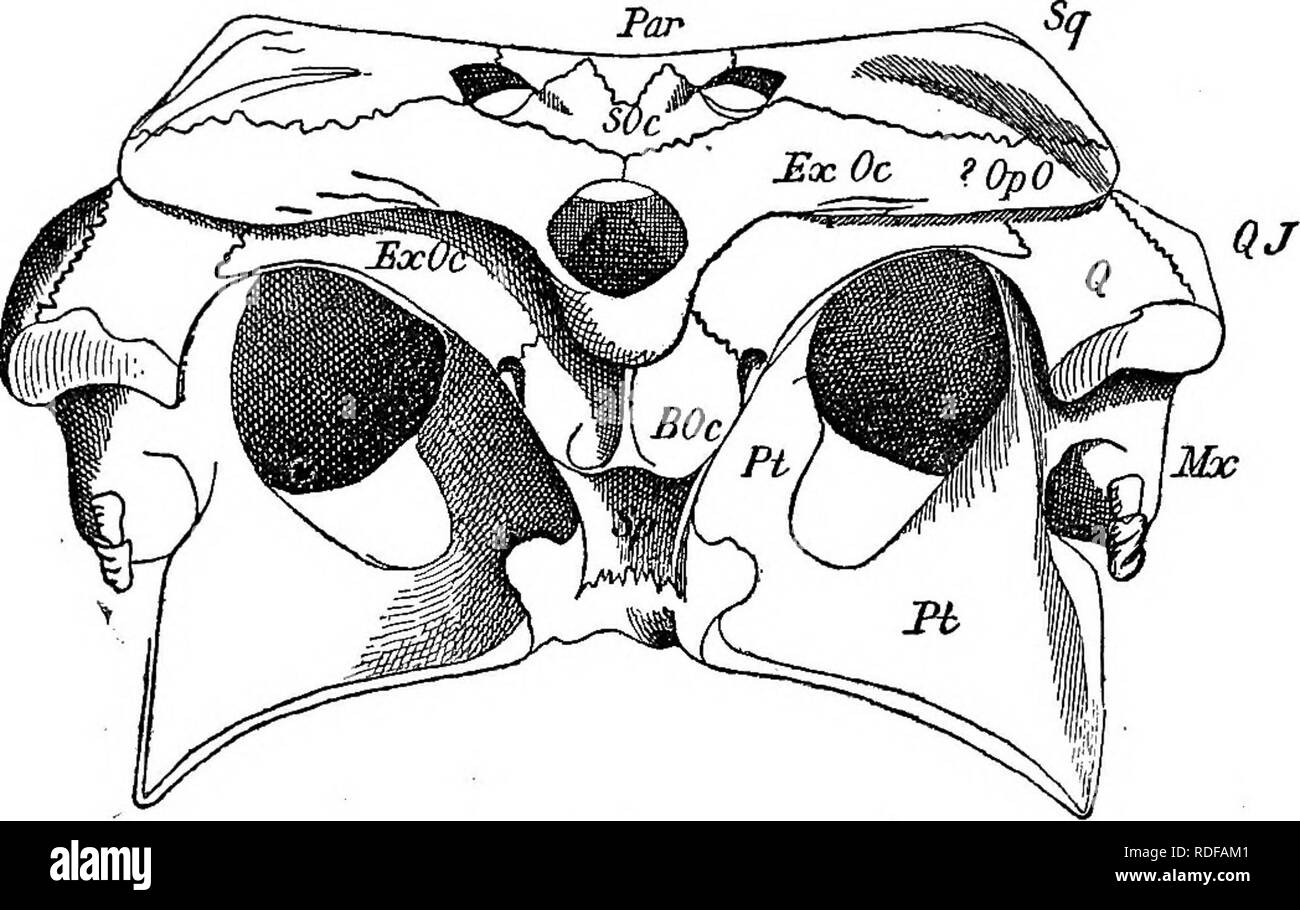. Cope papers, 1871-[1897. Zoology; Paleontology. ZOOLOGY. 215 In MammaUa it is confluent with, the elements mentioned, re- maining distinct from the exoccipital, and forming part of the " mastoid and petrous portions of the temporal." (Huxley.) In Aves it is early confluent with the exoccipital. (Parker.) In EeptiUa it is distinct in all the orders except the Crocodilia, where it is confluent with the exoccipital. (Fig. 11, Exo.) This group resembles the higher vertebrates in the close union of the quadratum with the prootic and other cranial bones; and we pursue the line of extreme

Image details
Contributor:
The Book Worm / Alamy Stock PhotoImage ID:
RDFAM1File size:
7.1 MB (374.1 KB Compressed download)Releases:
Model - no | Property - noDo I need a release?Dimensions:
1989 x 1256 px | 33.7 x 21.3 cm | 13.3 x 8.4 inches | 150dpiMore information:
This image is a public domain image, which means either that copyright has expired in the image or the copyright holder has waived their copyright. Alamy charges you a fee for access to the high resolution copy of the image.
This image could have imperfections as it’s either historical or reportage.
. Cope papers, 1871-[1897. Zoology; Paleontology. ZOOLOGY. 215 In MammaUa it is confluent with, the elements mentioned, re- maining distinct from the exoccipital, and forming part of the " mastoid and petrous portions of the temporal." (Huxley.) In Aves it is early confluent with the exoccipital. (Parker.) In EeptiUa it is distinct in all the orders except the Crocodilia, where it is confluent with the exoccipital. (Fig. 11, Exo.) This group resembles the higher vertebrates in the close union of the quadratum with the prootic and other cranial bones; and we pursue the line of extreme Eeptilian divergence in following the gradual removal of the quadrate from the cranial walls, on the. Fig 11.—Alligator mississippiensis ; craniuin from behind. extremity of a suspending cylinder, which reaches its highest expression in the Ophidia. First in this succession comes the separation of the opisthotic. We have already seen its position in Ichthyopterygia (fig. 1, Opo) where it is peculiar in separation from the supraoccipital and connection with the basioccipital. We have also seen an element in the Anomodontia identified with it (fig. 6, Opo) which differs in its connections, by being attached to the supraoccipital and exoccipital only. Passing to the Testudinata, the element maintains the same con- nections, with the addition of that with (fig. 10, Opo) the prootic anteriorly, and is extended externally over the proximal extrem- ity of the quadratum, a connection not observed in the types just described.. Please note that these images are extracted from scanned page images that may have been digitally enhanced for readability - coloration and appearance of these illustrations may not perfectly resemble the original work.. Cope, E. D. (Edward Drinker), 1840-1897. Philadelphia, etc.